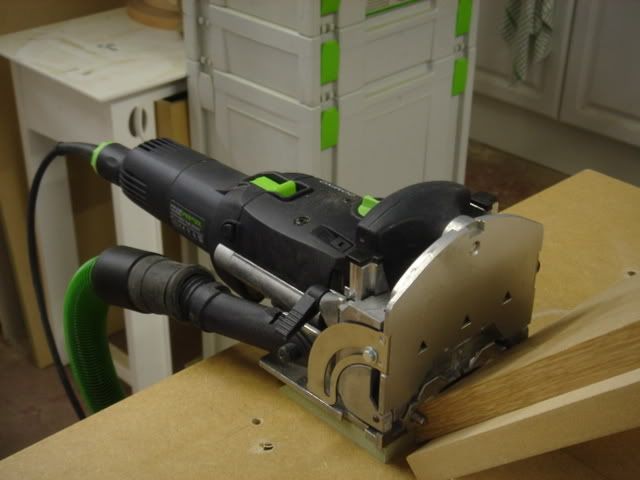Cary Swoveland
Member
- Joined
- Jan 22, 2007
- Messages
- 53
I am using the Domino to join mitered edges of two boards (as one would miter all four edges of six boards to form a cube). I am using (true) 3/4" ply. I did some calculations to determine fence height and mortise depth, depending on which dominos I used:
Material thickness: 0.75"/19mm
Domino Fence Mortise Domino
Size Height Depth Length
5 20 15 28
6 22 15 28
8 20 12 22
10 20 12 22
If 5mm are used, the fence should be set to 20mm and the normal 15mm mortise is cut. If larger dominos are used, the dominos must be shortened to the lengths indicated.
For material 1" thick or greater, the fence should be set at its maximum height, 30mm, and standard mortise depths should be cut, up to 20mm (i.e., 15mm for 5mm dominos, 40mm for larger ones). 10mm dominos must be shortened (to about 38mm) to fit into 20mm mortises.
For material 1/2" thick or less, even 5mm dominos must be shortened, so I didn't bother doing those calculations.
I thought this information might be of interest to Domino owners.
Cary
PS I edited my original post to change the fence heights slightly to correspond to an indent (40mm), where possible.
Material thickness: 0.75"/19mm
Domino Fence Mortise Domino
Size Height Depth Length
5 20 15 28
6 22 15 28
8 20 12 22
10 20 12 22
If 5mm are used, the fence should be set to 20mm and the normal 15mm mortise is cut. If larger dominos are used, the dominos must be shortened to the lengths indicated.
For material 1" thick or greater, the fence should be set at its maximum height, 30mm, and standard mortise depths should be cut, up to 20mm (i.e., 15mm for 5mm dominos, 40mm for larger ones). 10mm dominos must be shortened (to about 38mm) to fit into 20mm mortises.
For material 1/2" thick or less, even 5mm dominos must be shortened, so I didn't bother doing those calculations.
I thought this information might be of interest to Domino owners.
Cary
PS I edited my original post to change the fence heights slightly to correspond to an indent (40mm), where possible.

